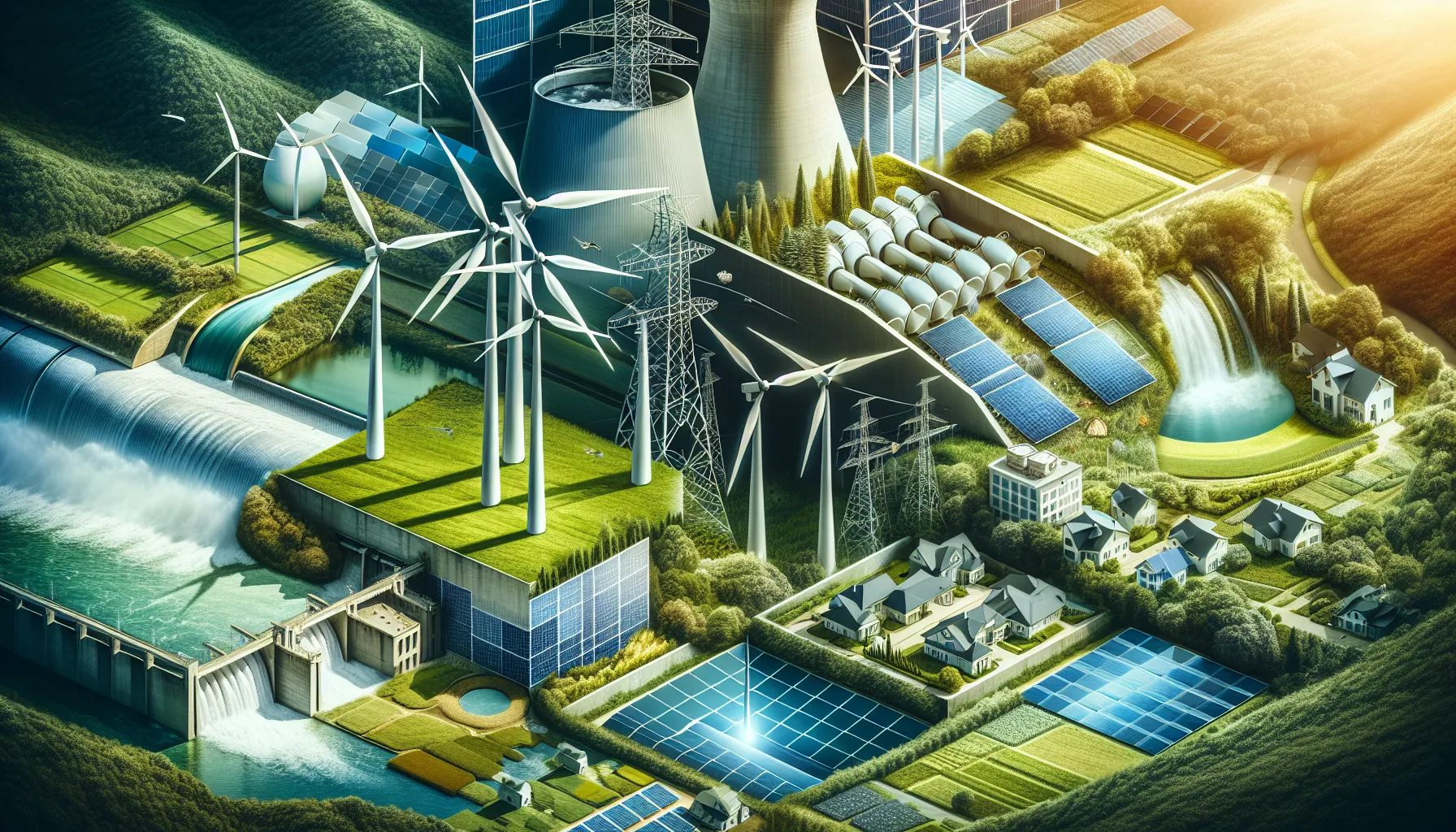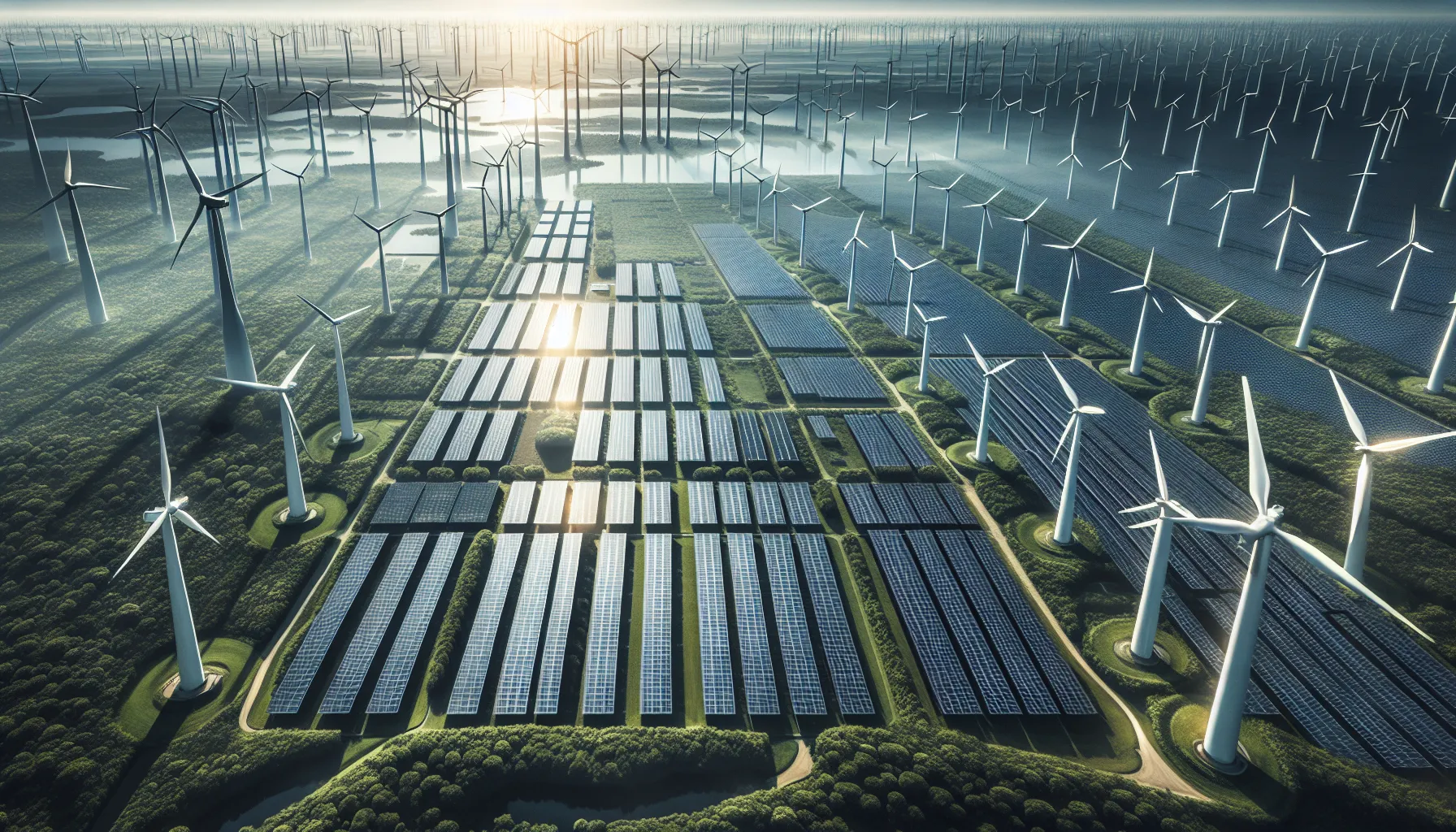The topic of renewable energy’s role in reducing carbon footprints has gained significant traction in recent IELTS Writing Task 2 exams. Based on past trends and current global focus on climate change, it’s highly likely that this theme will continue to appear frequently in future tests. Let’s examine a relevant question that has appeared in recent exams:
Some people believe that the best way to reduce carbon footprints is to increase the use of renewable energy sources. To what extent do you agree or disagree?
Analysing the Question
This question requires candidates to express their opinion on whether increasing renewable energy usage is the most effective method to reduce carbon footprints. Key points to consider:
- The main topic is reducing carbon footprints
- The proposed solution is increasing renewable energy use
- Candidates must agree or disagree with this proposition
- The phrase “to what extent” allows for a nuanced response
Sample Essay 1 (Band 8-9)
Climate change is undeniably one of the most pressing issues of our time, and reducing carbon footprints has become a global priority. While there are various strategies to address this challenge, I strongly agree that increasing the use of renewable energy sources is indeed the most effective approach to minimizing our carbon impact.
Renewable energy sources, such as solar, wind, and hydroelectric power, offer a sustainable alternative to fossil fuels, which are the primary contributors to greenhouse gas emissions. By transitioning to these clean energy sources, we can significantly reduce the amount of carbon dioxide released into the atmosphere. For instance, a study by the International Renewable Energy Agency (IRENA) found that renewable energy could potentially reduce carbon emissions by 70% by 2050, playing a crucial role in limiting global temperature rise to 1.5°C above pre-industrial levels.
 Renewable energy sources like wind, solar, and hydro power
Renewable energy sources like wind, solar, and hydro power
Moreover, the widespread adoption of renewable energy can catalyze a shift towards a more sustainable economy. As governments and businesses invest in green technologies, it creates a ripple effect throughout various sectors, promoting innovation and job creation in environmentally friendly industries. This transition not only reduces carbon footprints but also fosters economic growth and energy independence, addressing multiple challenges simultaneously.
However, it is important to acknowledge that while renewable energy is a powerful tool in combating climate change, it should not be viewed as the sole solution. Complementary measures such as energy efficiency improvements, sustainable urban planning, and changes in individual consumption patterns are also crucial. These approaches work synergistically with renewable energy to create a comprehensive strategy for carbon footprint reduction.
In conclusion, I firmly believe that increasing the use of renewable energy sources is the most effective way to reduce carbon footprints. Its potential to dramatically cut emissions, coupled with its ability to drive sustainable economic growth, makes it an indispensable component of our fight against climate change. Nevertheless, it is essential to recognize that a holistic approach, incorporating various strategies alongside renewable energy, will ultimately yield the best results in our collective effort to create a more sustainable future.
 A sustainable city powered by renewable energy
A sustainable city powered by renewable energy
(Word count: 318)
Explanation of Band 8-9 Score
This essay demonstrates the characteristics of a high-scoring response:
- Task Achievement: The essay fully addresses all parts of the task, presenting a clear position with fully extended and well-supported ideas.
- Coherence and Cohesion: The response is cohesive with clear progression throughout. Paragraphs are well-organized and logically connected.
- Lexical Resource: A wide range of vocabulary is used accurately and appropriately, including topic-specific terms like “greenhouse gas emissions” and “energy independence.”
- Grammatical Range and Accuracy: The essay showcases a wide range of complex structures used accurately, with only rare minor errors.
- Critical Thinking: The response demonstrates sophisticated critical thinking by acknowledging counterarguments and presenting a nuanced view.
Sample Essay 2 (Band 6-7)
In today’s world, reducing carbon footprints is very important to fight climate change. Many people think that using more renewable energy is the best way to do this. I mostly agree with this idea, but I also think there are other things we should consider.
Renewable energy sources like solar and wind power are good for the environment because they don’t produce carbon dioxide when generating electricity. This is different from fossil fuels like coal and oil, which release a lot of harmful gases into the air. By using more renewable energy, we can definitely reduce our carbon footprints. For example, many countries are now building more solar farms and wind turbines to produce clean energy.
Another reason why renewable energy is helpful is that it can last forever. Unlike fossil fuels, which will run out someday, we can always use the sun and wind to make energy. This means we can have a stable energy supply without damaging the environment.
 Large-scale renewable energy production with solar panels and wind turbines
Large-scale renewable energy production with solar panels and wind turbines
However, I don’t think renewable energy alone can solve all our carbon footprint problems. We also need to think about other ways to reduce emissions. For instance, using public transportation or electric cars can help cut down on pollution from vehicles. Also, planting more trees and protecting forests is important because trees absorb carbon dioxide from the air.
In conclusion, I believe that increasing the use of renewable energy is a very good way to reduce carbon footprints, but it’s not the only solution. We should combine renewable energy with other methods to create a more effective plan for fighting climate change and protecting our planet.
(Word count: 267)
Explanation of Band 6-7 Score
This essay demonstrates the characteristics of a mid-range response:
- Task Achievement: The essay addresses the task and presents a clear position, but the ideas are less fully developed compared to the Band 8-9 essay.
- Coherence and Cohesion: The response is generally coherent with clear overall progression, though the linking of ideas is sometimes less smooth.
- Lexical Resource: There is a sufficient range of vocabulary, with some attempt at using less common lexical items, though with occasional inaccuracy.
- Grammatical Range and Accuracy: A mix of simple and complex sentence structures is used, with generally good control, though errors occur when attempting more complex structures.
- Critical Thinking: The essay shows some evidence of critical thinking by considering alternative viewpoints, but the analysis is less sophisticated than in the higher band essay.
Key Vocabulary to Remember
- Carbon footprint (noun) – /ˈkɑːrbən ˈfʊtprɪnt/ – The amount of carbon dioxide released into the atmosphere as a result of the activities of a particular individual, organization, or community.
- Renewable energy (noun) – /rɪˈnjuːəbəl ˈenərdʒi/ – Energy from a source that is not depleted when used, such as wind or solar power.
- Greenhouse gas emissions (noun) – /ˈɡriːnhaʊs ɡæs ɪˈmɪʃənz/ – The release of gases that contribute to the greenhouse effect by absorbing infrared radiation.
- Sustainability (noun) – /səˌsteɪnəˈbɪləti/ – The ability to maintain or support a process continuously over time.
- Energy efficiency (noun) – /ˈenərdʒi ɪˈfɪʃənsi/ – The use of less energy to perform the same task or produce the same result.
- Climate change mitigation (noun) – /ˈklaɪmət tʃeɪndʒ ˌmɪtɪˈɡeɪʃən/ – Actions to limit the magnitude or rate of long-term climate change.
- Fossil fuels (noun) – /ˈfɒsəl fjuːəlz/ – A natural fuel such as coal or gas, formed in the geological past from the remains of living organisms.
- Carbon-neutral (adjective) – /ˈkɑːrbən ˈnjuːtrəl/ – Making no net release of carbon dioxide to the atmosphere.
- Sustainable development (noun) – /səˈsteɪnəbəl dɪˈveləpmənt/ – Development that meets the needs of the present without compromising the ability of future generations to meet their own needs.
- Green technology (noun) – /ɡriːn tekˈnɒlədʒi/ – Technology that is environmentally friendly, developed and used in such a way so that it doesn’t disturb our environment and conserves natural resources.
Conclusion
The role of renewable energy in reducing carbon footprints is a crucial topic in today’s world and is likely to remain relevant in future IELTS Writing Task 2 exams. Understanding this theme and being able to articulate ideas clearly on the subject is essential for achieving a high score.
For further practice, consider writing essays on related topics such as:
- The government’s role in promoting renewable energy adoption
- The economic impact of transitioning to renewable energy sources
- The challenges and solutions in implementing renewable energy on a global scale
We encourage you to write your own essay on the topic provided in this article and share it in the comments section. This practice will help you refine your writing skills and prepare effectively for the IELTS Writing Task 2.
To further expand your knowledge on related topics, you may find these articles helpful:
- Role of Technology in Preventing Climate Disasters
- How Reducing Carbon Footprints Can Prevent Global Warming
- Social Media’s Role in Creating Awareness About Climate Change
Remember, consistent practice and exposure to a variety of environmental topics will significantly improve your performance in the IELTS Writing Task 2.

